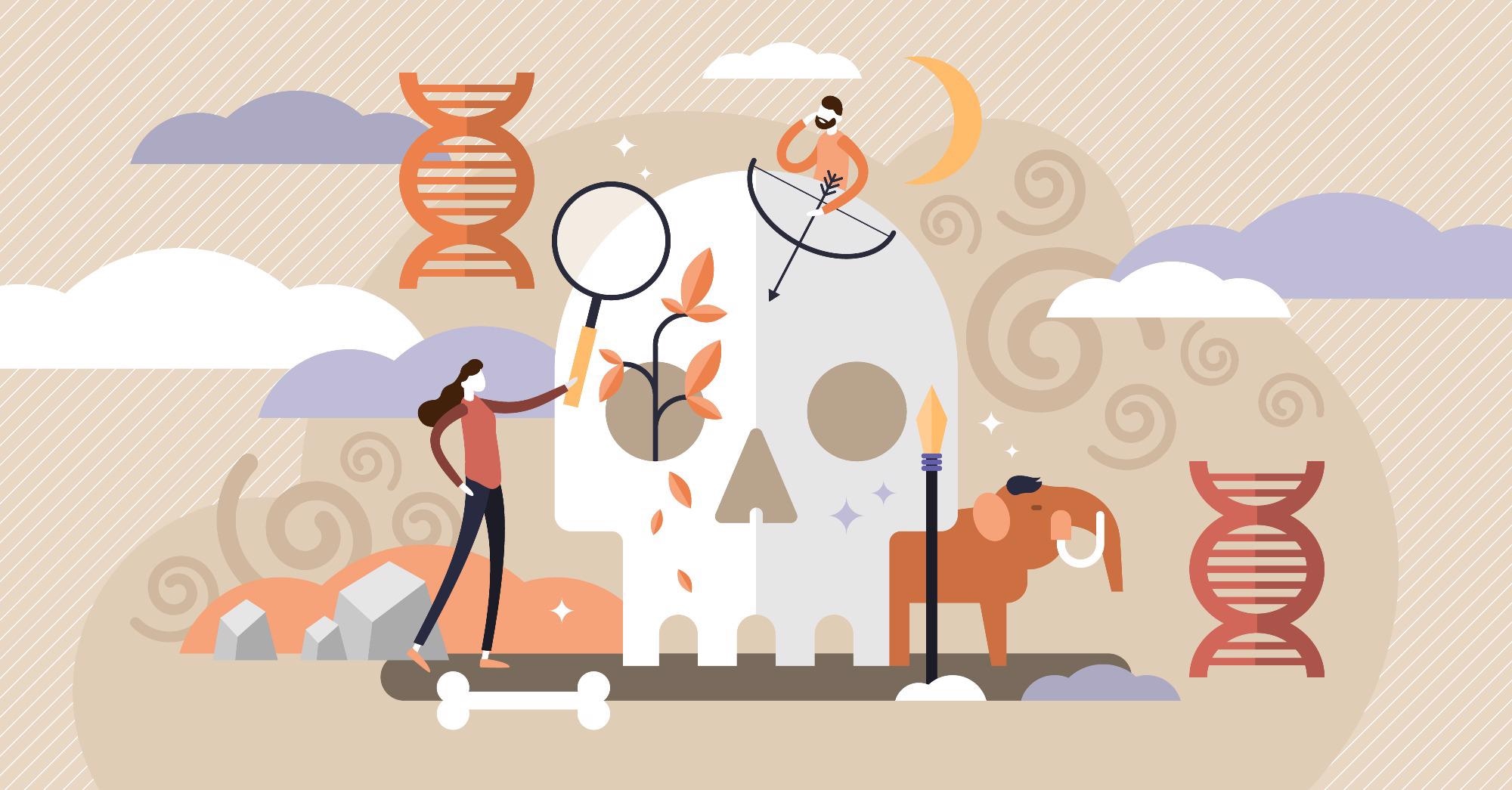Please can you introduce yourself and tell us what inspired your latest research into ancient DNA?
I am Dr. Alexander Salis, a recent Ph.D. graduate from the University of Adelaide, originally from Dunedin, New Zealand. My academic training and research experience has nurtured a strong fascination working with genetic data to improve our understanding of the world around us, particularly to improve our understanding of the way in which organisms respond to climate and environmental change. This was a major focus of my Ph.D. research, from which this paper was produced.
Both lions and brown bears were known to have dispersed into North America from Asia, across the Bering Land Bridge — a now-submerged land bridge that intermittently connected Alaska and the far east of Russia during the Ice Ages. Previous research had shown brown bears had dispersed multiple times into North America and went extinct in a key area of North America, Eastern Beringia (represented today by Alaska and the Yukon Territory of Canada), before reappearing thousands of years later. To build on this research we more extensively sampled brown bears across North America and Eurasia and added an additional carnivore taxon, lions.
What is meant by the term ‘ancient DNA’?
Ancient DNA (aDNA) is DNA from the remains of an organism, where the DNA has not been specifically preserved and is therefore likely to be degraded. Ancient DNA can be extracted from museum specimens, archaeological or subfossil (i.e., not fully fossilized) remains, or even sediment samples, and can provide insight into the evolutionary history and genetic relationships of populations or species. Ancient DNA comes with unique challenges, as after an organism dies the normal mechanisms that protect DNA no longer function, resulting in DNA that is damaged and fragmented.

Image Credit: VectorMine/Shutterstock.com
Can you describe how you carried out your latest research into ancient DNA? What did you discover?
In this latest paper, we sequenced ancient DNA from subfossil remains of brown bears and lions across Eurasia and North America, ranging in age from approximately 50 years old, to over 50 thousand years old. We found that lions showed strikingly similar patterns of dispersal and extinction to brown bears, with dispersals of brown bears and lions appearing synchronous and strongly coinciding with the presence of the Bering Land Bridge.
Most notably, before the final extinction of lions in North America, they also disappeared from Eastern Beringia at the same time as brown bears, reappearing thousands of years later. This points to wider ecosystem changes in the region during this period. Our results coincide with reported changes in abundance and diversity of vegetation, which would have impacted herbivore populations and with knock-on effects on predator populations (such as lions and brown bears).
Were there any limitations to your latest research? If so, what were they?
The rarity of fossil bones is always a challenge when studying the past—only bones from very few animals survive until the present day, and even these are hard to find. We relied on a big international team to help us find the pieces of the puzzle and put them all together. It’s impossible to do this type of research alone.
A further limitation, and of ancient DNA research in general, is the correlation of DNA preservation with temperature. Consequently, the geographic distribution of well-preserved specimens is biased towards colder regions (such as permafrost regions of Russia and North America). This results in an overrepresentation of colder regions (for example Eastern Beringia) over warmer regions (for example, the southern USA).
Why is studying the disappearance of animals important not only for scientific research but for conservation efforts?
Most of our knowledge about the function and diversity of present-day ecosystems comes from observation over the last few hundred years. This is only the blink of an eye in the context of life’s history, which can give the impression that the distribution of species and the size of their populations are relatively constant through time.
By using fossil and genetic data to study biodiversity change over tens- to hundreds of thousands of years, we can gain a better understanding of long-term cycles and trends. This can provide useful baseline data for conservation, and provide points of comparison for how species and ecosystems have responded to similar changes in the past.
How can changes in an ecosystem impact the extinction of a species?
The relationships and interactions between different species that are part of the same ecosystem can be very complex. A change in the climate or environment may not affect a given species directly, but if an important prey species or predator is affected, then impacts can cascade and dramatically reshape whole ecosystems.
So changes in the abundance of different types of plants—may be due to increases or decreases in rainfall—probably won’t directly affect a large carnivore like a lion or bear. But the herbivores that eat those plants might disappear or move elsewhere, which could cause the carnivores to become extinct anyway. Different species of carnivores also compete with one another for prey, and ecosystem changes can also tip the balance of this competition in one direction or another.

Image Credit: Cinemanikor/Shutterstock.com
Do you believe that with the ongoing climate crisis we will see more animals disappearing as a result? What more should be done to prevent this from occurring?
Observations from the past—like our research into lions and bears—agree with what we’re currently seeing: climate changes will cause ongoing disruption of ecosystems and the extinction of species. However, an important difference is that in the past a species might become extinct in one area but survive in another, eventually allowing it to recover and return naturally (like lions and bears crossing the Bering Land Bridge).
We have cleared so much habitat now that corridors for the movement of many animals are very limited—it’s important that we create opportunities for species to change their distribution in the face of impending climate change. This might mean protecting additional areas of remaining habitat, restoring previously degraded areas, and connecting existing patches of habitat.
What are the next steps in your research?
We can’t fully understand past ecosystem changes by studying only a few species. The next step would be to collect similar data from other animals to learn about how the changes in each are connected. Important work is already underway using ancient DNA to study a broader range of not only animals but plants too.
About Dr. Alexander Salis
Dr. Alexander Salis completed his undergraduate degree at the University of Otago before pursuing a Ph.D. at the University of Adelaide under the supervision of Kieren Mitchell, graduating in 2021. During his Ph.D. his research focused on the use of ancient DNA to investigate how fauna responds to climate and environmental change using bears as a model taxon..jpg)
Dr. Salis is now working as a postdoctoral fellow at the American Museum of Natural History in New York City, working on unlocking the potential of museum specimens to yield historic DNA.
About Dr. Kieren Mitchell
Dr. Kieren Mitchell completed his Ph.D. in 2015 and subsequently worked for six years at the University of Adelaide’s Australian Centre for Ancient DNA (ACAD).
.jpg)
His research focuses on natural history, and more specifically on the origin, evolution, and disappearance of now-extinct animal species. He has used genetic information from fossil bones to study elephant birds from Madagascar, dire wolves from North America, and the enigmatic Tasmanian wolf (or thylacine).
Dr. Mitchell currently works at the University of Otago, where he studies moa—giant, extinct, flightless birds from New Zealand.